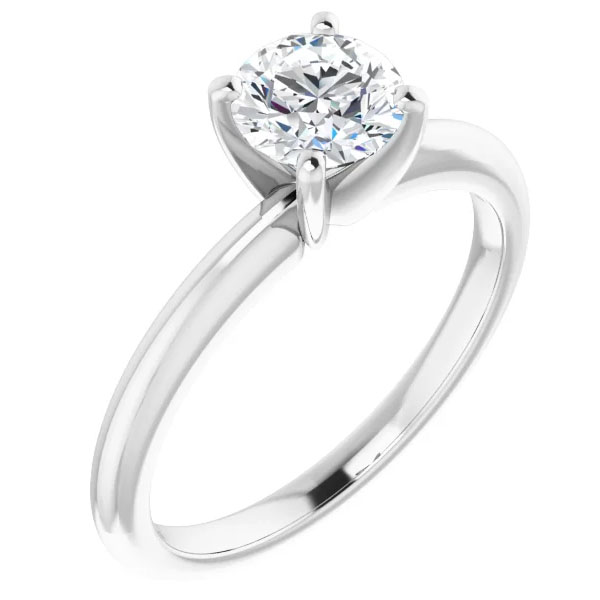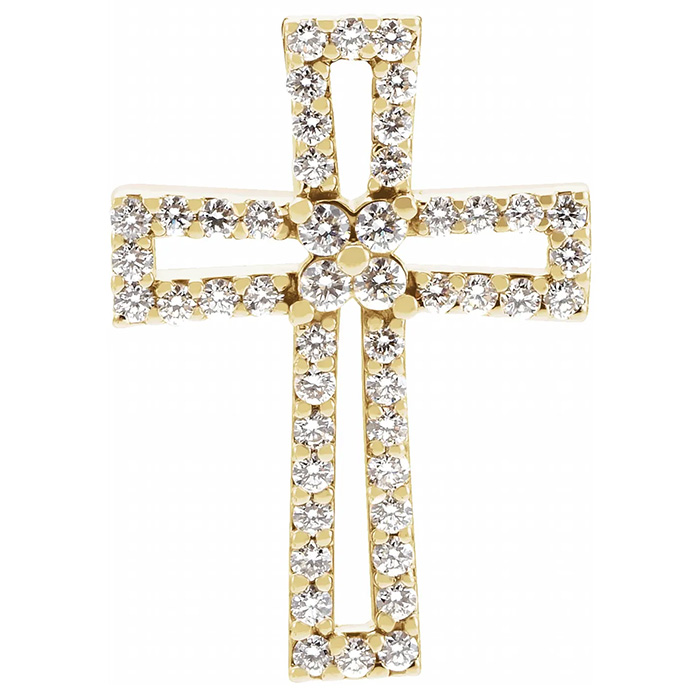Hypoallergenic Cross Pendants
Those with skin sensitives and allergies to base metals like nickel or precious metals like silver, should consider hypoallergenic cross pendants such as platinum crosses. Below is a list of some of our best selling hypoallergenic crosses and what makes them a suitable choice for those with various skin conditions and allergies.
While there are less expensive options such as titanium cross pendants or surgical stainless steel for some, those looking for a fine jewelry piece or something more high-end or a keepsake heirloom piece, will want to consider platinum jewelry as the best hypoallergenic option available.
950 Grade Pure Platinum
Platinum is a vey pure metal that is considered completely hypoallergenic. This is, in part, not only because of the chemical composition of platinum, but because platinum jewelry is very pure as a whole. You’ll want to look for 950 grade pure platinum, which means that the jewelry you are considering is made with 95% pure solid platinum and 5% other balancing alloys, such as iridium or ruthenium (depending on the manufacturer). All platinum jewelry should be stamped with either “PLAT” or “950” to signify it is 950 grade, pure platinum, which is the highest purity available for platinum crosses and jewelry.
What Causes Allergies in Jewelry?
It’s not often the precious metal itself, such as gold or sterling silver that is the culprit behind most skin allergies when it comes to jewelry, but the base alloys and balancing metals that are mixed in to form the jewelry.
The most common allergen in jewelry is nickel. Nickel is a base alloy that is contained in most sterling silver crosses and even white gold. So when people say they are allergic to silver, for example, it may in fact be the silver, but more likely it is actually the nickel that they are allergic to.
Are Gold Crosses Hypoallergenic?
While white gold crosses can be an irritant for a minority of the population because of the nickel found in white gold, yellow gold on the other hand often works well for people with metal allergies, since classic yellow gold does not contain any nickel.
Gold does, however, often contain copper, and so those with copper sensitivity (which is far more rare) may not want to choose yellow gold either. But for most people, yellow gold is considered hypoallergenic as well, compared to less expensive metals such as sterling silver, which often contain nickel (the main culprit in jewelry allergies).
As such, yellow gold cross pendants are also often a suitable choice for those with skin sensitivity, as opposed to white gold. But keep in mind, however, that this does not hold true for everyone, as some people are allergic to gold jewelry as well. Others, simply don’t like yellow gold and prefer a white metal, and so that’s where platinum crosses come in again for those who want a white, hypoallergenic precious metal.
Higher Cost of Platinum
While platinum is completely hypoallergenic for the vast majority of people because of its purity, it is, however, more expensive. Expect to pay 2-3 times more for a platinum cross than for a gold one. Expect your platinum cross to be heavier and feel more substantial (which people often prefer), because it is a heavier, denser metal and is 95% pure (with only 5% balancing alloys used in jewelry). This also contributes to the higher price of platinum.
Also keep in mind that you are paying for a premium precious metal that is pure, valuable, hypoallergenic and requires little to no maintenance. While white gold requires occasional rhodium plating to keep its white shine, platinum is naturally white and requires no additional plating of any kind.
Category: Christian Jewelry, Cross Jewelry, Easter Jewelry, Jewelry Education














